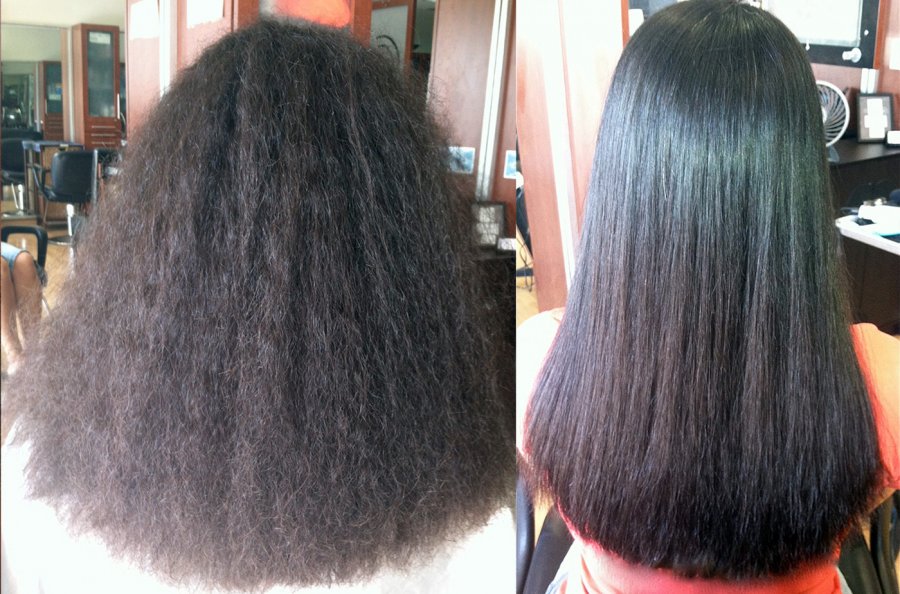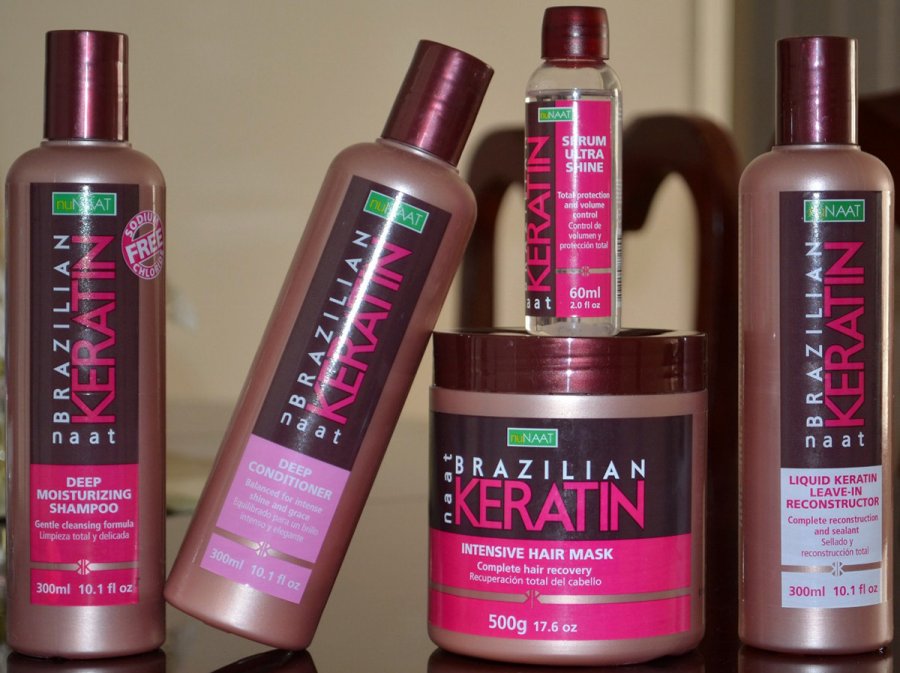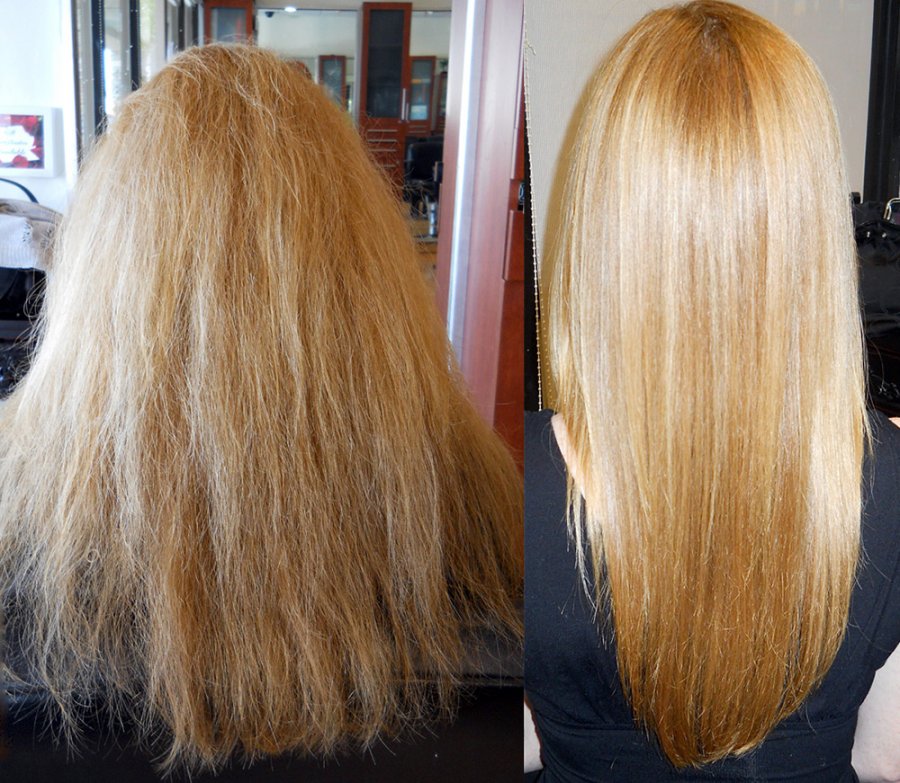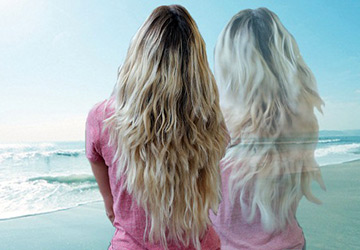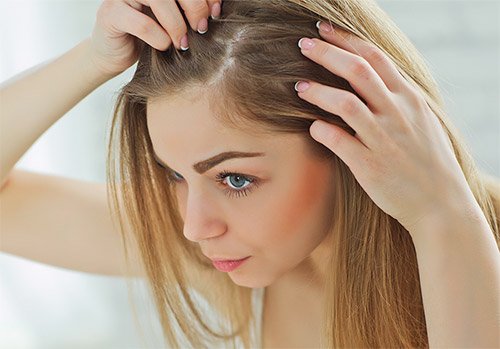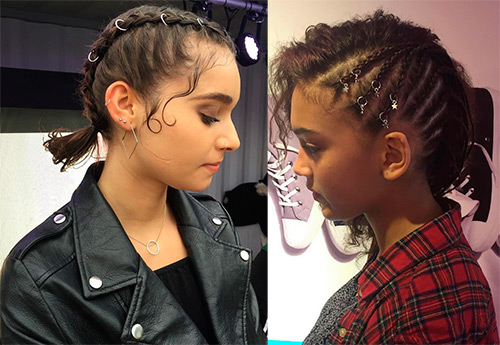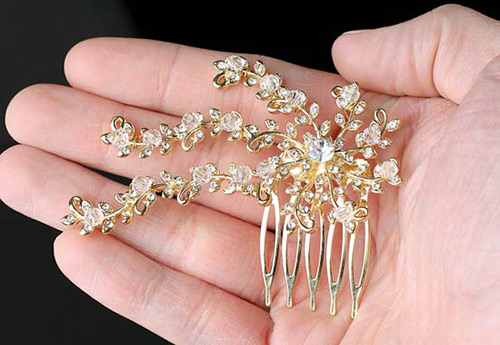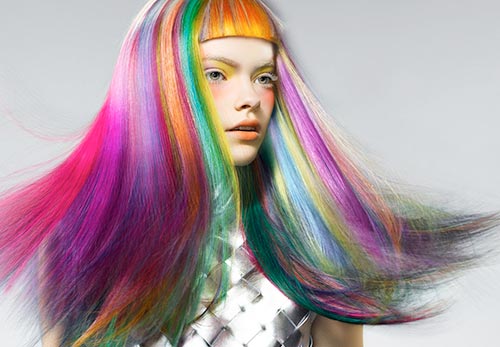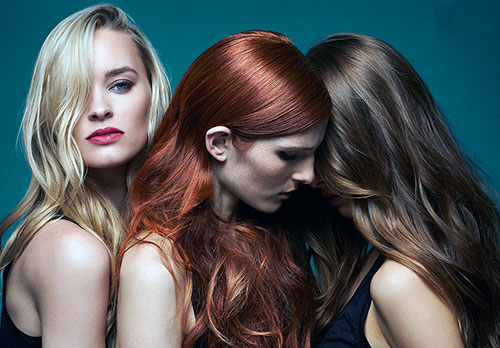Hair care
Keratin in hair and hair restoration
The natural protein keratin is one of the main building blocks of our hair. It is from it that 78-80% human hair consists. This unique protein is found not only in hair. For example, the horn of a rhinoceros and the beak of a parrot are formed thanks to this wonderful squirrel. Bird feathers, spider webs - it's protein? -Keratin, silkworm thread and our nails - also contain keratin. Protein keratin is one of the strongest proteins and is second only to chitin.
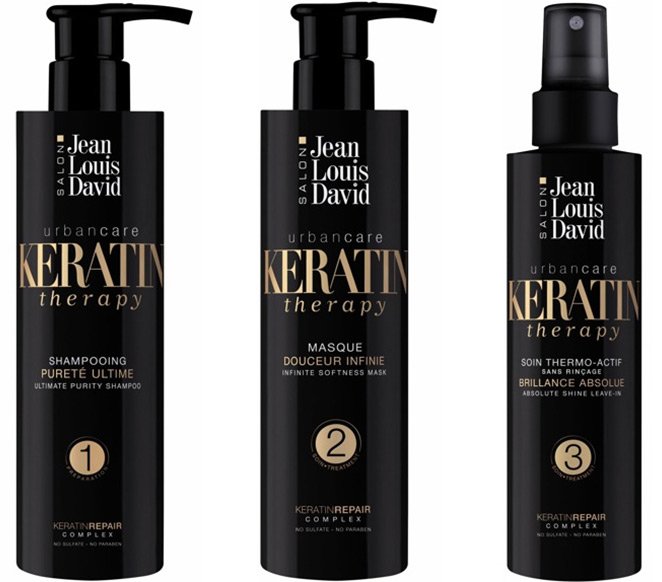
Keratin in hair
The hair shaft is covered with tiny scales, and the tighter these scales are adjacent to each other, the better the hair surface reflects light, making healthy hair smooth and shiny. If the scales are loosely adjacent to each other, then the surface of the hair is rough, the hair does not reflect light, becomes dull, it is damaged, it lacks moisture. Such hair loses useful substances, and harmful elements penetrate into it from the environment.
Keratin protein is the most potent and effective protein that acts as a patch to help restore hair structure. Keratin is insoluble in nature, but thanks to chemical research, it has now become possible to add it to shampoos, masks and conditioners to help heal damaged hair and give it shine, elasticity and smoothness.
Keratin is also present in many cosmetic procedures, such as hair restoration and lamination. Moreover, now these procedures can be performed not only in salons, but also at home. So taking care of your hair becomes more and more convenient.
But all these masks, shampoos and procedures to replenish keratin are needed for damaged hair. How to preserve your natural keratin and how to replenish its reserves using natural natural methods? Let's try to figure it out ...
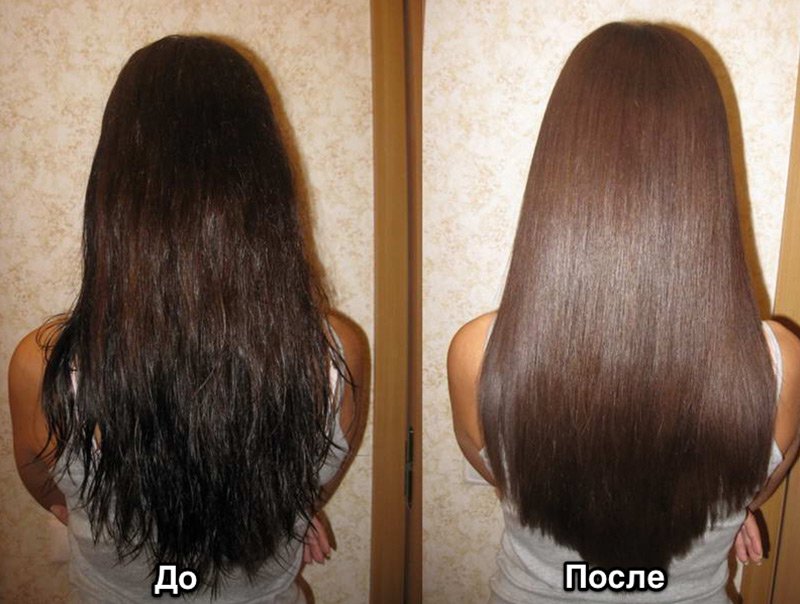
Keratin is a complex protein, the composition of keratin contains amino acids that can form various compounds, giving keratin different properties - it can become dense, both in the beak of a parrot and in long straight hair, or soft, like in the curls of a baby.
Hair keratin is synthesized by special cells of keratinocytes in the hair follicle and is part of the thin keratinized cells of the cuticle - the outer layer of the hair. The cuticle protects our hair from external damage - it is thanks to keratin that its cells, like shingles, tightly cover the hair and protect it. Keratin protects hair from wind and cold, from damage when using hair dryers and tongs, from destruction when staining and perm and many other harmful factors to which we ourselves expose our hair in pursuit of beauty or simply out of carelessness.
At the same time, different people have different amounts of keratin in their hair, and therefore hair is different. The amount of keratin in the hair of Slavs, Asians and Africans is different.
African hair consists of only 80-85% keratin, because their hair needs flexibility to create an air cushion and protect the head from excessive heat in the sun. Hair of Europeans consists of 89-90% keratin, and of Asians - up to 95% due to the harsh climate with sudden changes in air temperature and strong winds, in which hair needs dense keratin protection.
And also - the hair of brunettes contains more keratin than the hair of blondes, since light hair easily reflects the sun's rays, and dark hair needs dense protection. Curly hair has less keratin than straight hair, because the curves of natural curls suggest a soft cuticle structure with a minimum keratin content, and straight long hair, like a cover, is dressed in a dense cuticle layer with a high keratin content. This is how everything is wisely invented in nature ...
Then why does our hair lack keratin?
The negative impact of the environment, unhealthy diet and bad habits, stress, unreasonable diets, swimming in sea water and the scorching sun - all this can cause hair loss of keratin. In addition, frequent perm and dyeing of hair with ammonia dyes are active destroyers of keratin.
How do you know if your hair lacks keratin?
The lack of keratin makes the cuticle porous and fragile. As a result, the protective layer of the hair ceases to retain moisture, and the hair becomes dry, brittle and thinned. If the amount of keratin in the stratum corneum decreases, the scales of the hair cuticle loosely adhere to each other and puff up, so the strands look dull and lifeless, the ends split, the hair gets tangled, frizzy and difficult to style.
How to make up for the lack of keratin in hair?
A balanced diet, shampoos and hair masks with keratin, keratin hair straightening will help to fill the keratin deficiency in the hair.
Nutrition to Replenish Keratin Deficiency
For the production of amino acids that make up hair keratin, the body needs sulfur, nitrogen, silicon and a number of trace elements, which are rich in animal proteins - meat, fish, poultry, and sour milk products. In addition, vitamin B6 speeds up protein metabolism and contributes to the production of keratin. The main sources of vitamin B6 for the body are nuts, soy and liver. Fruits and vegetables will help to quickly assimilate trace elements and break them down into amino acids to produce keratin.
Rational nutrition with "keratin" products for 4-6 weeks will significantly improve the condition of the hair.
This should be especially taken into account by vegetarians who refuse meat, poultry, and fish. Thrift on nature is good, but everything should be in moderation - a complete rejection of animal food will not make you prettier, smarter and healthier. A reasonable person does not need complete abstinence from meat, poultry and fish, it is enough to fast periodically - following the example of Orthodox fasts, when more than half of the days a year you need to abstain from food of animal origin, and on other days you can allow a piece of fish or a chicken cutlet, or maybe a piece of kebab ...
In the next publication mystyle.decorexpro.com/en/ will tell in detail about the means and procedures by which you can quickly fill the keratin deficiency in your hair, making it shiny and beautiful.
Comments and Reviews
Add a comment
Rating news
Shades of clothing that make women look younger
What shades of hair make women younger: rules and photos
Funny wedding dresses - photos and ideas
12 most expensive down jackets for the winter
How to look 25 at 40: tips from supermodels
Beautiful schoolgirls
Anti-aging haircuts and hairstyles for women
Fashionable skirts for autumn and winter
Fashionable women's trousers for the cold season
Fashionable and stylish sandals for summer 2024
Spring-summer 2024
 Fashionable dresses and tops with thin spaghetti straps
Fashionable dresses and tops with thin spaghetti straps
 Bandana tops: how to wear stylishly and beautifully
Bandana tops: how to wear stylishly and beautifully
 How to put together the perfect men's wardrobe for the summer
How to put together the perfect men's wardrobe for the summer
 Trendy shorts for spring-summer 2024
Trendy shorts for spring-summer 2024
 Fashionable skirts for spring-summer 2024: a guide to online shopping
Fashionable skirts for spring-summer 2024: a guide to online shopping
 The most fashionable dresses spring-summer 2024: styles and colors
The most fashionable dresses spring-summer 2024: styles and colors
 Fashionable total look 2024: image ideas and trends
Fashionable total look 2024: image ideas and trends
